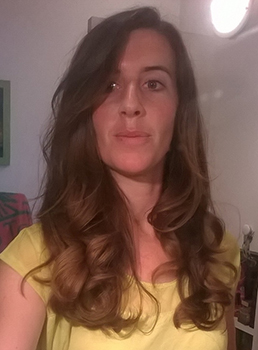
Julie Picard
Julie Picard’s students in Sens, France, may have a future in journalism.
Picard’s high school history and geography students entered a class newspaper to this year’s National Contest on Resistance and Deportation (CNRD), which began in 1961 as a way for French students to create written and audiovisual works inspired by themes of resistance and deportation during World War II. High school students may submit individual essays written as class assignments, group papers, or individual or group audiovisual projects that address the year’s theme. This year’s theme is “The liberation of the Nazi camps, the return of deportees and the discovery of the concentration camps.”
USC Shoah Foundation provides a curated selection of 20 clips from French-language Holocaust survivor testimonies from its Visual History Archive for all participants to use in their projects. These clips are available to watch and download online. Students may refer to them in their essays or include clips in their audiovisual projects. This is the third year USC Shoah Foundation has partnered with CNRD.
Winners are selected from each county; from these, national winners are chosen by a jury. For the 2013-2014 contest, 35,083 students from 1,718 schools entered.
Picard was leading her students in a unit on literature and society when she decided to have them enter a group project to CNRD: a class newspaper called The Sense of History. The class studied the historical context of liberation and the return of the deportees, then made a list of important topics that could be articles in their newspaper. Each student chose a topic and then conducted research from online sources, books and more.
After consulting with Emmanuel Debono, USC Shoah Foundation international consultant in France, Picard assigned the students to watch the curated testimony clips and reference them in their articles, in order to make them more consistent.
The resulting articles cover a wide range of topics, from the experiences of liberators to survivors’ journeys back home. The newspaper also includes historical photographs and citations of a variety of sources.
Picard was pleased with the way the project turned out and thought it was a great exercise for her students.
“I found the contest to be interesting to be involved in as a group, the challenge for the students was new and motivating,” Picard said. “They were receptive to the individual stories of each testimony.”
She said the Holocaust is a large part of the school curriculum in France, and it is important to study especially now considering current events in Europe.
“It is indeed a very important part of modern history, especially in Europe, and even more with the ever growing importance of anti-semitism, racism, and xenophobia in the life of everyday and the speech of the far right political landscape,” Picard said.